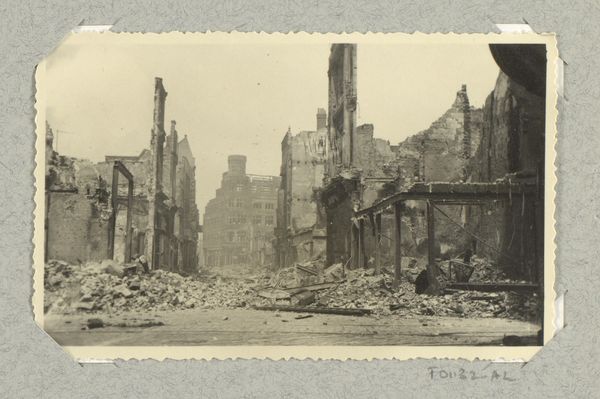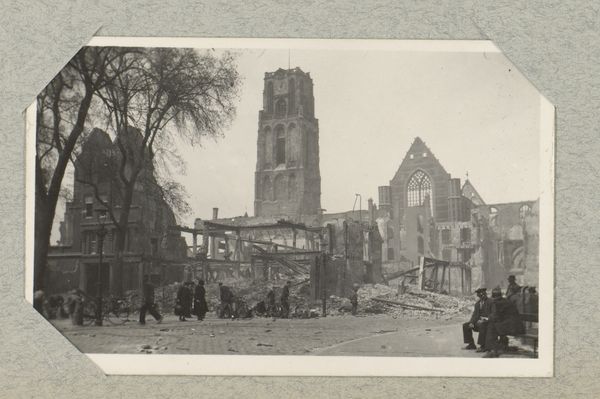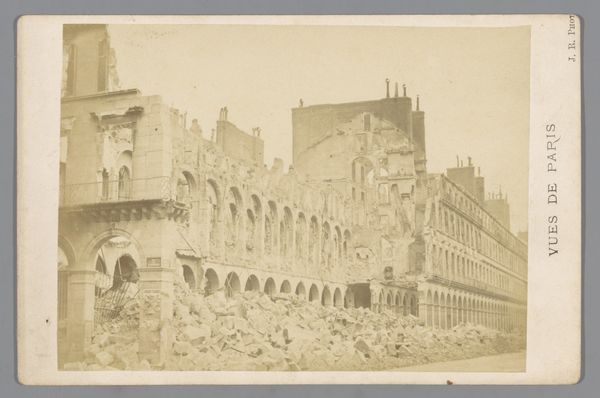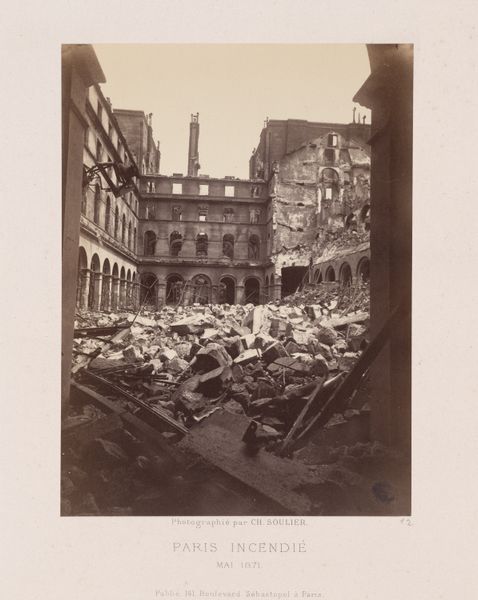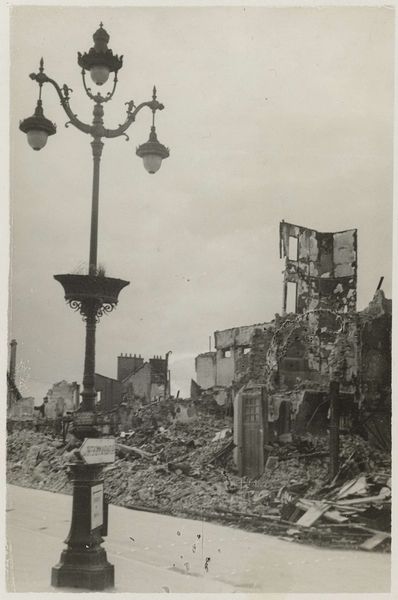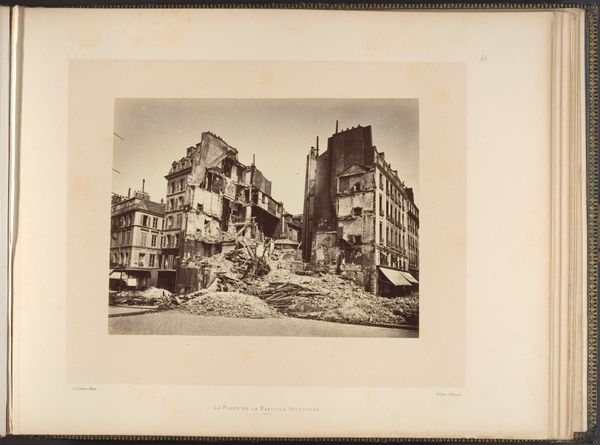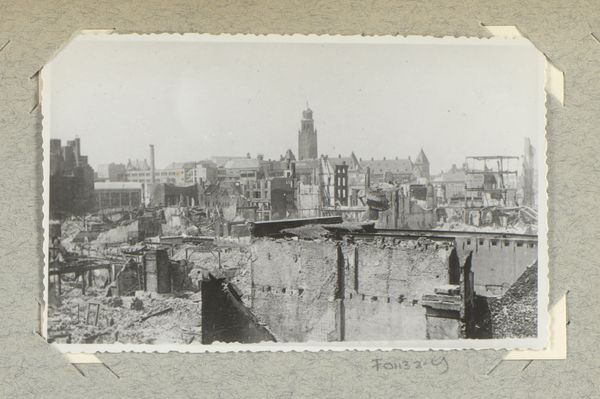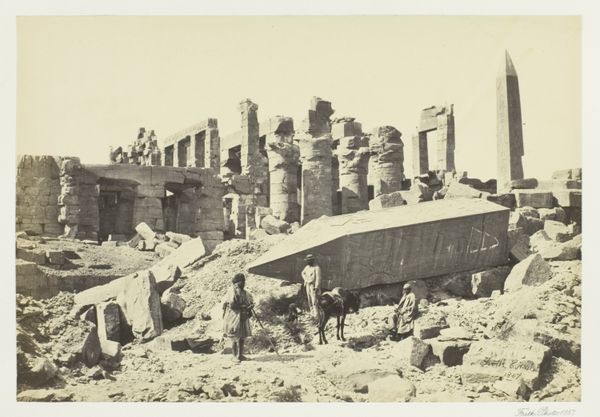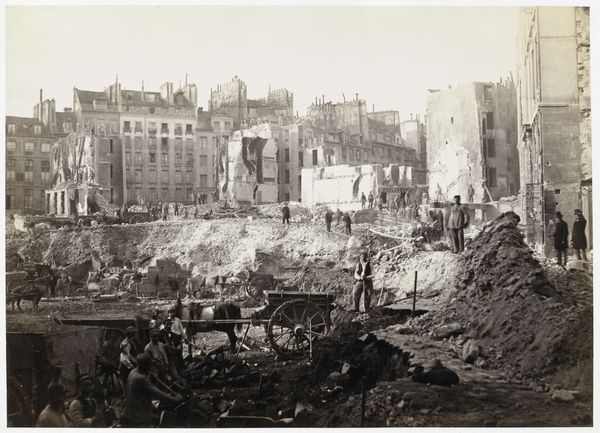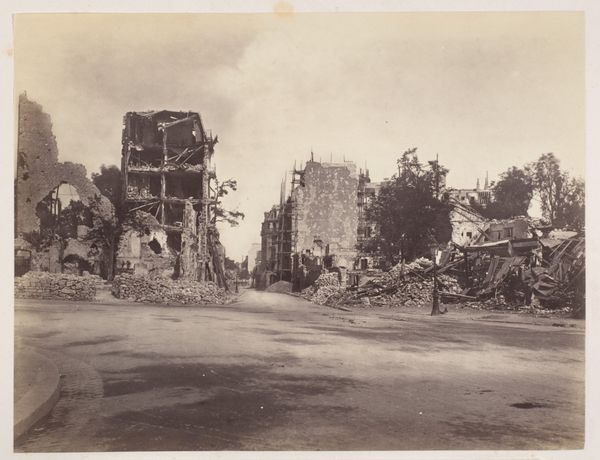
photography, gelatin-silver-print
#
film photography
#
landscape
#
outdoor photograph
#
outdoor photo
#
archive photography
#
photography
#
historical photography
#
gelatin-silver-print
#
monochrome photography
#
cityscape
#
realism
#
monochrome
Dimensions: height 60 mm, width 90 mm
Copyright: Rijks Museum: Open Domain
Curator: This gelatin-silver print, made sometime between 1940 and 1945, shows a military figure in a bombed-out street. It’s simply titled “Militair in een gebombardeerde straat.” Editor: Stark. The devastation speaks volumes. The texture of the rubble against the relative smoothness of the street...it's a study in contrasts, isn't it? Curator: Indeed. The use of gelatin silver allows for that incredible detail, highlighting not just the physical damage, but also, perhaps, the societal wreckage. Look at the 'Labor' sign hanging askew—a haunting symbol. Editor: Semiotically charged. The greyscale flattens everything, turning it into almost a diagram of destruction. Did the availability and affordability of gelatin silver prints influence the proliferation of this kind of imagery during wartime, democratizing documentation? Curator: Precisely. The materials became accessible, shifting photography from studio portraiture to frontline reportage. The labor involved in documenting—the photographer's labor, the printer’s labor—became intertwined with the event itself. This wasn’t about glorifying war; it was about showing its human cost. Editor: The composition directs our gaze powerfully along the street, past the solitary figure towards...nothing. Utterly hopeless. Yet the clarity is incredible; you see every broken brick, every shadow. I find the lack of dramatic lighting especially compelling; it lends authenticity to the scene, a documentary feel. Curator: It eschews heroic imagery; instead, it focuses on the labor of survival. The ruins almost become a raw material for something new, and that military figure embodies the start of rebuilding. This photograph exists due to conflict but highlights hope inherent in difficult circumstances and working-class struggle through the LABOR sign. Editor: It’s an incredibly potent visual, reminding us that even in ruins, form, composition, and perspective convey such raw emotion, regardless of who framed the picture. Curator: And the choices available during mass production for photographic documentation inevitably lead to powerful iconography available to all. Editor: It certainly gives one much to contemplate.
Comments
No comments
Be the first to comment and join the conversation on the ultimate creative platform.
